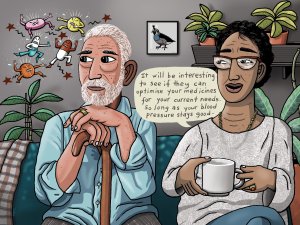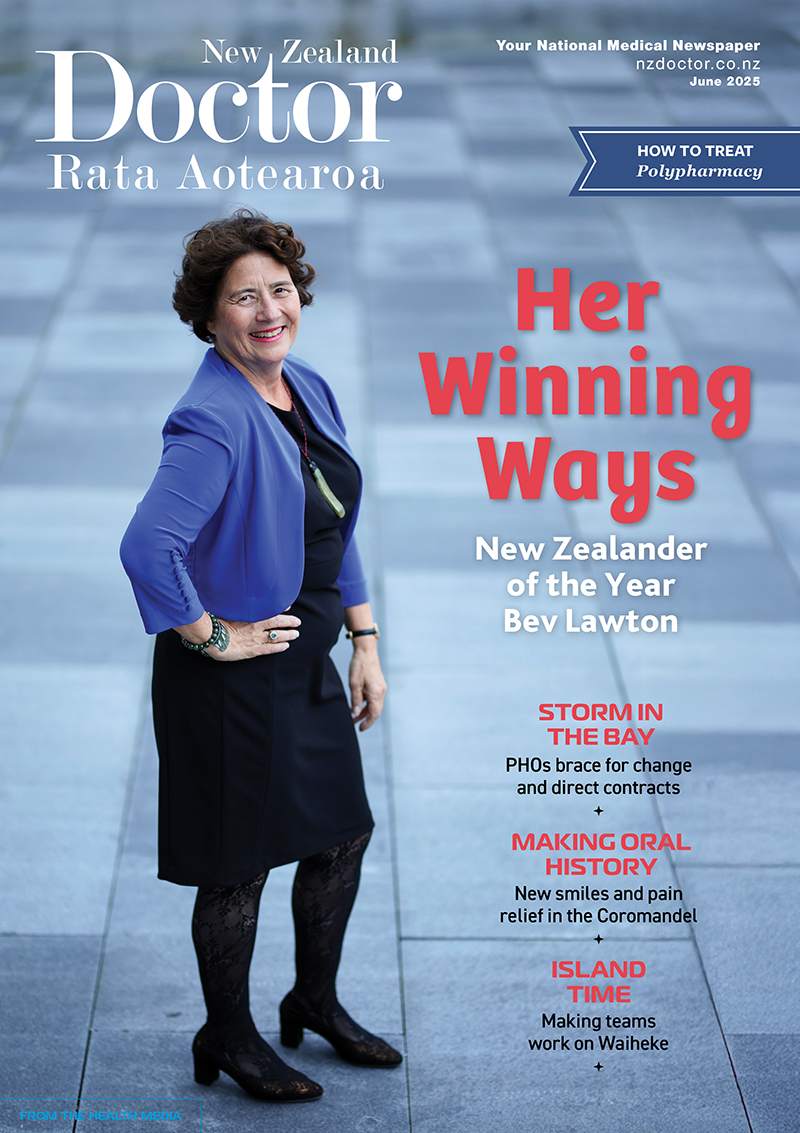For older people and frail people, the long-term benefit of medicines reduces and the potential for harm from adverse effects increases. When the benefit–risk balance changes in this way, medicine review and optimisation are important to simplify the therapeutic regimen, reduce inappropriate medicines and minimise risks. In this article, pharmacist prescriber Linda Bryant uses two case studies to illustrate important considerations during medicine reviews
Telehealth part of solution for GP workload burden
This is an early online publication of a story due to appear in the 22 May print issue
+Opinion
In print
Telehealth part of solution for GP workload burden
Friday 17 May 2024, 04:57 PM
![Telehealth cartoon [iwat1929 on iStock]](/sites/default/files/styles/cropped_image_16_7_/public/2024-05/Telehealth_Cartoon_CR_iwat1929_on_iStock.jpg?itok=ZOAqOYoo)
[Image: iwat1929 on iStock]
The recent report that 40–50 per cent of work done in general practice could be done via tele consultations raised more than a few hackles. The source
Kia ora and welcome to New Zealand Doctor Rata Aotearoa
Not a subscriber? Unlock this article by subscribing here.
References
How is primary care access changing? A retrospective, repeated cross-sectional study of patient-initiated demand at general practices in England using a modern access model, 2019–2022. BMJ Open 2023;13(8):17 August



